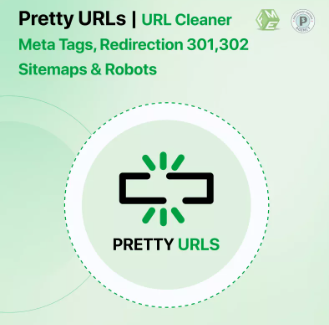If you want to boost your PrestaShop store’s visibility and improve SEO, one key strategy is optimizing your URLs. A well-structured PrestaShop friendly URL plays a crucial role in driving organic traffic, making your site more accessible to search engines and users. PrestaShop 1.7 includes several features to help you clean up your URLs, but understanding how to implement and optimize them effectively can make all the difference.
In this guide, we’ll share practical tips to help you maximize traffic using friendly URL PrestaShop 1.7 and explain why URL structure matters for your site’s SEO.
Why PrestaShop Friendly URLs Are Essential for Traffic
The URL is the first thing both search engines and users see when accessing a webpage. A messy, complicated URL filled with numbers and special characters can confuse users and negatively impact your site’s search engine rankings. On the other hand, a PrestaShop friendly URL is clean, easy to read, and provides a clear idea of the page content, benefiting both user experience and SEO.
A friendly URL structure improves click-through rates by making your links look more trustworthy and readable. For instance, users are more likely to click on a link like “www.example.com/mens-running-shoes” than a confusing link like “www.example.com/index.php?id_product=345&controller=product.”
Tip 1: Enable Friendly URLs in PrestaShop 1.7
The first step in optimizing your URLs is to enable friendly URLs in your PrestaShop 1.7 store. Fortunately, PrestaShop makes this easy.
How to Enable Friendly URLs:
- Log in to your PrestaShop back office.
- Go to Shop Parameters > Traffic & SEO.
- Scroll down to the Set up URLs section.
- Toggle the Friendly URL option to “Yes” and click Save.
This simple setting removes the unnecessary characters from your URLs, transforming them into cleaner, more SEO-friendly versions. For example, a URL like “www.example.com/index.php?id_category=2&controller=category” will become “www.example.com/women-shoes.”
By enabling this feature, your store becomes more navigable and SEO-friendly, setting the foundation for better traffic generation.
Tip 2: Simplify Your URL Structure
After enabling friendly URL PrestaShop 1.7, focus on simplifying the URL structure of each page. Your URLs should be descriptive, concise, and easy to understand. Aim for shorter URLs that directly reflect the page content while avoiding unnecessary characters or words.
Best Practices for Simplifying URLs:
- Use relevant keywords: Incorporate important keywords into the URL that describe the product, category, or page content. This helps search engines understand the purpose of the page.
- Avoid special characters: Hyphens are the preferred separator for words in URLs, but avoid using other special characters like underscores, question marks, or ampersands.
- Make it human-readable: URLs should be easy for users to read and understand. A URL like “www.example.com/red-leather-jacket” is more intuitive and user-friendly than “www.example.com/product-id12345.”
Simplifying your URLs can lead to better user engagement and improved search engine rankings, both of which are essential for driving organic traffic.
Tip 3: Remove Unnecessary IDs from URLs
One common issue that PrestaShop store owners face is having product or category IDs in their URLs. These extra numbers don’t provide any meaningful information for users or search engines and can make your URLs unnecessarily long and complex. To further improve your URL structure, you should remove these IDs.
How to Remove IDs from URLs:
- Go to Shop Parameters > Traffic & SEO.
- Scroll down to the Set up URLs section.
- Toggle the Disable Apache’s mod_rewrite IDs option to “Yes.”
- Save the changes, and the system will automatically remove product and category IDs from your URLs.
By removing these IDs, you ensure that your URLs are concise and easy to understand, which can help improve your SEO and user experience.
Tip 4: Avoid Duplicate URLs
Duplicate URLs can confuse search engines and hurt your SEO rankings. To avoid this, you should configure canonical URLs for each page, ensuring that search engines index the correct version of the URL. PrestaShop 1.7 includes options for managing canonical URLs, helping you avoid this common pitfall.
How to Set Canonical URLs:
- Navigate to Shop Parameters > Traffic & SEO.
- In the Set up URLs section, enable the option to automatically manage canonical URLs.
- Save your changes.
Using canonical URLs ensures that search engines know which version of your pages to index, improving your SEO performance and helping you avoid penalties for duplicate content.
Tip 5: Monitor URL Performance
Once you’ve implemented your PrestaShop friendly URL optimizations, it’s crucial to track how well they are performing. Use tools like Google Analytics and Google Search Console to monitor your traffic, search rankings, and any potential issues such as crawl errors or 404 pages.
Key Metrics to Monitor:
- Organic traffic: Check if your organic traffic has increased after implementing friendly URLs.
- Bounce rate: A lower bounce rate indicates that users are finding your URLs more relevant and engaging.
- Crawl errors: Use Google Search Console to detect any crawl errors caused by broken links or missing pages.
By regularly monitoring these metrics, you can ensure your URL optimization efforts are paying off and continue to fine-tune your strategy for even better results.
Tip 6: Focus on Mobile-Friendliness
Mobile users now account for a significant portion of web traffic, so it’s essential that your friendly URLs are optimized for mobile. Long, complex URLs are particularly difficult for mobile users to navigate, making concise, clean URLs even more important.
PrestaShop 1.7 is designed with mobile-friendliness in mind, so ensure your store’s theme and layout are responsive. Also, test your URLs on various devices to confirm that they remain easy to read and navigate on smaller screens.
Tip 7: Use Redirects Wisely
When updating your URL structure, it’s important to use redirects to preserve your existing SEO value. If you’re changing an old, non-friendly URL to a new, cleaner version, implement a 301 redirect from the old URL to the new one. This ensures that search engines and users are directed to the correct page and that you don’t lose any traffic or ranking benefits from the old URL.
Conclusion
Optimizing your store’s PrestaShop friendly URL structure is a simple yet powerful way to boost traffic and improve your SEO. By enabling friendly URLs in PrestaShop 1.7, simplifying your URLs, removing unnecessary IDs, and avoiding duplicate content, you’ll create a more user-friendly and search-engine-friendly site. These tips will help you maximize your traffic and ensure that your store is well-optimized for both desktop and mobile users.
For More Blogs Please Visit: storysupportpro.




